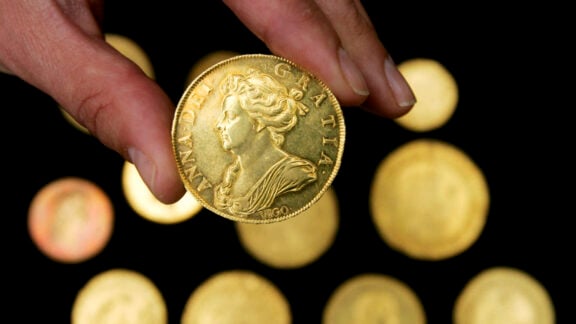From Tinos to Crete and from distant Costa Rica to France, every corner of the Christian world has a special page in its history dedicated to the Virgin Mary.
Each place is special, with relics that give a special character to the places of worship, works of art that are admired by millions of people and dedications that tell human stories of pain and hope.
Among the most well-known examples of worship for the mother of Jesus, are the Icon of Panagia in Tinos, the Chapel of Our Lady of the Miraculous Medal in Paris, the Notre Dame Cathedral in Paris, the Strasbourg Cathedral, Our Lady of Fatime in Portugal, the church of Santa Maria Maggiore in Rome, Our Lady of Lourdes in France, and the Our Lady of the Angels Basilica in Cartago, Costa Rica.
The altars testify to the worship of the Christian inhabitants throughout the world.
Our Lady of Tinos
The icon of Panagia in Tinos, to which many miracles are attributed, was found on 30 January 1823, in the Doxara estate in Tinos, after visions of the nun Pelagia.
A temple was built in the place where the icon was found which, for 200 years, has had many reportedly been the source of numerous miracles.
The site attracts many believers every year, either to worship her and thank her or to ask for their personal wish.
The discovery of the icon through the nun’s vision was itself considered a great miracle that was inevitably associated with the Greek Revolution, with Theodoros Kolokotronis, Andreas Miaoulis, Nikitaras and Yannis Makriyannis rushing to the island to worship her.

Santa Maria Maggiore of Rome
The church of Santa Maria Maggiore, is a miracle of art, architecture and faith, and was literally founded on one of them: the so-called ‘miracle of the snow’.
According to tradition, in 356 CE Pope Liberius saw in a dream the Virgin Mary asking him to build a church in her honour in Rome, one the spot when snow would fall.
Snow did fall in Rome, in the middle of summer, on the Esquiline Hill on 5 August 356, at the spot where the Pope founded the church (one of the most important of the early Christian years.)
According to another version, the dream was not seen by the Pope himself but by a Roman patrician John and his wife, who wished to build a church in honour of the Virgin Mary.
The Virgin of Guadalupe
One of the most famous miraculous apparitions of the Virgin Mary is the one in Guadalupe, Mexico.
According to tradition, the Virgin Mary appeared to a local of the town north of Mexico City in 1531, and the inhabitants worshipped her and proclaimed her their queen.
They built a temple at the site of the miracle, which is honoured in her name.
Our Lady of Guadalupe celebrates on 12 December, wherein the faithful come to the church in traditional clothes, as custom dictates.
Our Lady of Lourdes
Europe’s most famous miracle-working Virgin Mary is that of the French city of Lourdes, which has been nicknamed “the city of miracles”.
The story traces back to 1858, when the daughter of a poor miller, Bernadette Soubirous, saw in a cave of the area a blinding glow springing from the earth.
She approached it, overcoming her fear, and saw a woman at the centre of the glow. She asked the woman who she was, and she replied by saying she was the “Immaculate Conception”.
From then on, water started gushing out and the inhabitants, in memory of the miracle, built the magnificent temple of Panagia.
Notre Dame of Paris
Notre Dame de Paris is one of the most historic religious buildings in the world and one of the most famous churches dedicated to the Virgin Mary.
The church is one of the most important Gothic cathedrals of the Middle Ages that was built on the ruins of two much earlier churches, which in turn had “inherited” a Gallo-Roman temple dedicated to Zeus.
In 1160, the Bishop of Paris Maurice de Sully decided to unite the two smaller churches into one large one.
The foundation was laid in 1163 by Pope Alexander III and the church was inaugurated in 1198.
The building was completed over the next hundred years, becoming one of the most impressive religious buildings in Europe.

The “Black Madonna”
Among the largest pilgrimages in Europe dedicated to the Virgin Mary is the so-called “Black Madonna”, a miraculous icon that is currently located in the Church of the Virgin Mary in the Czestochowa region of Poland.
The temple is named Jasna Gora and was built in the area to house the icon that was found in the private chapel of Prince Leo I of Galicia, monarch of Ukraine and Poland.
This hilly area was Poland’s only stronghold when the Swedes invaded the country in 1655. A handful of warriors and villagers managed to repel the Swedish troops, a fact attributed to the miraculous action of the Virgin Mary.
Since then, the “Black Madonna” of Jasna Gora has been declared the queen of Poland and important events of the country and great victories of the Polish army have in fact been attributed to her.
Every year, on the hill where the great church is located, thousands of believers flock for the celebration, which lasts for whole days and is characterised by acts of worship, songs and dance by all who participate in the pilgrimage and spend the night outside the church.
*As it was announced by the Ecumenical Patriarchate, following a decision from the Turkish authorities, permission for a divine service to mark the Dormition of the Theotokos on 15 August at the Panagia Soumela Monastery was granted for 23 August, not the 15th. The service will be celebrated by Metropolitan Stephanos of Kallioupolis and Madytos. The Ecumenical Patriarch Barthlomew will be in his hometown of Imbros on the 15th of August.









